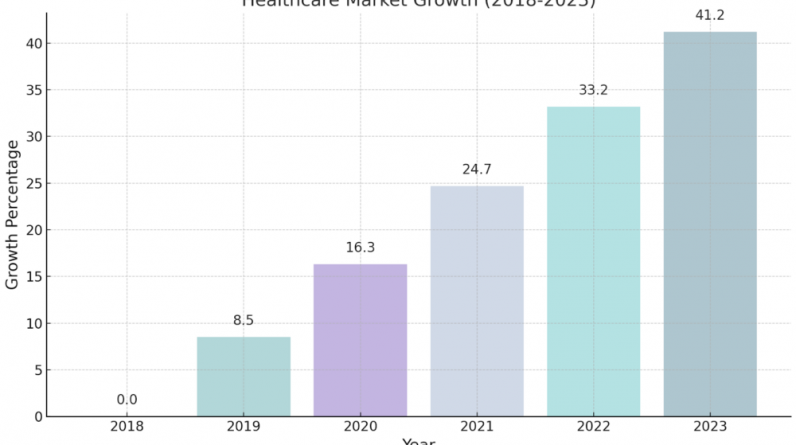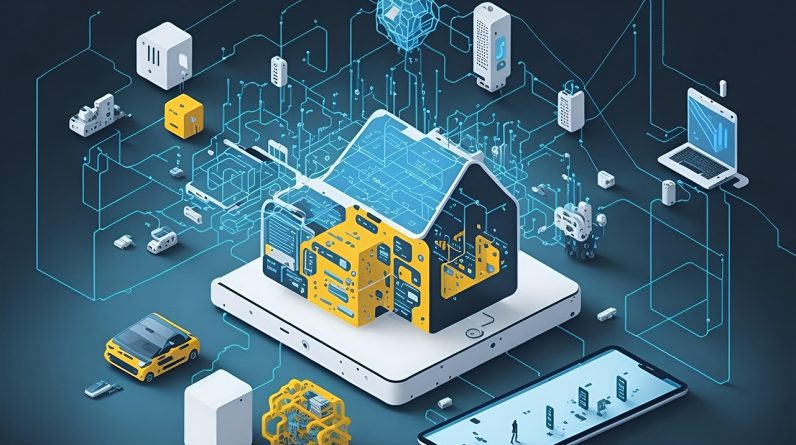
The intersection of AI and telemedicine has revolutionized healthcare delivery, offering unprecedented access to medical services and enhancing the quality of patient care.
According to AI statistics in healthcare, the healthcare market grew by 41.2% from 2018 to 2023. Much of this was due to the prevalence of telemedicine fueled by the easy availability of the internet, even in far-flung areas, making it easy for people to ‘visit’ the doctor in the comfort of their homes.
The synergy of telemedicine and Artificial Intelligence (AI) is transforming remote patient monitoring and care.
This article explores how AI enhances remote patient monitoring, improves personalized care, and enables early detection of health issues.
Additionally, this article also looks at real-world applications and future implications. By understanding these advancements, you’ll see how AI makes healthcare more proactive and patient-centric.
AI’s Role in Remote Patient Care
Telemedicine is the practice of providing healthcare remotely through technology. It allows doctors to consult with patients via video calls, secure messaging, and telehealth apps, making healthcare accessible without needing in-person visits.
AI is revolutionizing remote patient care by automating continuous monitoring and analyzing vast health data.
Here is the breakdown of how AI plays telemedicine’s role in healthcare:
Enhanced Remote Monitoring
AI enables continuous monitoring of patients through wearables and home-based devices. By analyzing real-time data, AI can identify critical health trends or abnormalities, providing timely alerts to caregivers. This helps in early intervention and reduces hospital readmissions, particularly for chronic conditions like heart disease, diabetes, and hypertension.
Personalized Care
AI tailors treatment plans to individual needs by analyzing personal health data. This personalized approach optimizes treatment effectiveness and improves patient satisfaction. For example, AI can customize fitness or dietary plans based on a patient’s lifestyle and health conditions.
Predictive Analytics
AI’s predictive capabilities allow for the identification of potential health issues before they become serious. By analyzing trends in patient data, AI can predict hospital readmissions or detect early signs of chronic conditions, enabling preventive action.
Improved Accessibility
AI helps overcome geographical barriers by providing remote diagnostics and consultations. AI-driven chatbots can answer patient queries, schedule appointments, and offer basic healthcare advice, ensuring 24/7 access to care.
Real-World Applications
- IBM Watson: Analyzes patient data to recommend personalized care plans.
- MIT’s Spot Robot: Measures patients’ vital signs remotely, minimizing risk to healthcare workers.
- Intel’s Health Application Platform: Enables data exchange from remote monitoring devices to healthcare providers, offering real-time insights into patient health.
- AI in Mental Health: Cognitive behavioral therapy (CBT) apps provide round-the-clock assistance for stress, anxiety, or depression.
Benefits of Telemedicine

The following are the benefits of telemedicine and the explanation of how it significantly advances remote patient care.
1- Convenience and Accessibility
Telemedicine allows patients to consult with healthcare providers from the comfort of their homes, eliminating the need for travel and reducing waiting times.
2- Cost-Effective
By reducing the need for physical visits and hospital admissions, telemedicine can significantly lower healthcare costs for both patients and providers.
3- Continuous Monitoring
Remote monitoring devices and AI tools enable continuous tracking of patient health metrics, allowing for timely interventions and better management of chronic conditions.
4- Improved Access to Specialists
Telemedicine connects patients with specialists regardless of geographical barriers, ensuring that even those in remote areas receive expert care.
5- Enhanced Patient Engagement
Virtual consultations and AI-driven health apps encourage patients to take an active role in their health management, leading to better adherence to treatment plans.
Challenges of Remote Patient Care And AI-Based Solutions
Remote patient monitoring employs wearable sensors, mobile apps, and smart home devices to collect data on vital signs, activity levels, sleep patterns, and medication adherence. This data is analyzed to identify health trends and risks, facilitating coordinated care through integration with EMR and EHR systems.
However, there are rising concerns about the safety of this data and telemedicine at large. AI has the answers.
Privacy and Security Concerns
AI-driven solutions can ensure secure platforms and encrypted communications, maintaining patient trust through advanced threat detection and data protection measures. Imagine AI algorithms actively hunting down potential breaches, neutralizing threats before they cause harm! It’s like having a digital guardian angel watching over every bit of data.
Technical and Connectivity Barriers
AI can optimize data transmission for low-bandwidth environments, making it possible to deliver high-quality care even in areas with poor connectivity. Additionally, AI can simplify interfaces, making them more accessible for older adults and those with limited technical skills.
Reimbursement and Regulatory Issues
AI can streamline administrative processes, ensuring regulation compliance and simplifying reimbursement procedures. It can take on the bureaucratic maze, automating complex tasks and helping healthcare providers navigate the intricate landscape of healthcare policies with unprecedented efficiency. It’s like having a super-efficient assistant that never sleeps!
Resistance to Change
Visualize AI as a friendly guide, offering personalized tutorials and support, breaking down resistance, and opening minds to the future of healthcare technology. It’s like having a patient, ever-present coach cheering you on, making every step forward exciting and rewarding!
The future is Bright and It’s Powered by AI
The future of telemedicine, fueled by AI, promises transformative advancements in patient care and accessibility.
Key Advancements Include:
- Enhanced Diagnostics: AI algorithms accurately interpret medical images, lab results, and genetic data.
- 24/7 Accessibility: AI chatbots and virtual assistants offering round-the-clock support, always ready to assist.
- Wearable Integration: Continuous health management through AI-analyzed data from smart devices, keeping tabs on your health in real-time.
- Cost Efficiency: AI automates administrative tasks, slashes operational costs, and boosts efficiency.
- Global Connectivity: Bridging gaps between urban and rural areas, ensuring equitable access to top-notch medical expertise.
By bridging gaps between urban and rural healthcare, AI will ensure equitable access to medical expertise globally. Picture a world where AI revolutionizes telemedicine, making healthcare more efficient, personalized, and inclusive.
Conclusion
Telemedicine, empowered by AI, is revolutionizing remote patient monitoring and care.
By enabling continuous health monitoring, personalized treatments, and improving patient engagement, these technologies are making healthcare more efficient and accessible.
As AI and telemedicine evolve, they promise to significantly enhance healthcare delivery and patient outcomes.
There is now a greater-than-ever need for rapid adoption and integration of AI technologies in the healthcare sector, revolutionizing patient care and operational efficiencies. With such significant advancements, AI is poised to continue driving transformative changes in healthcare.








